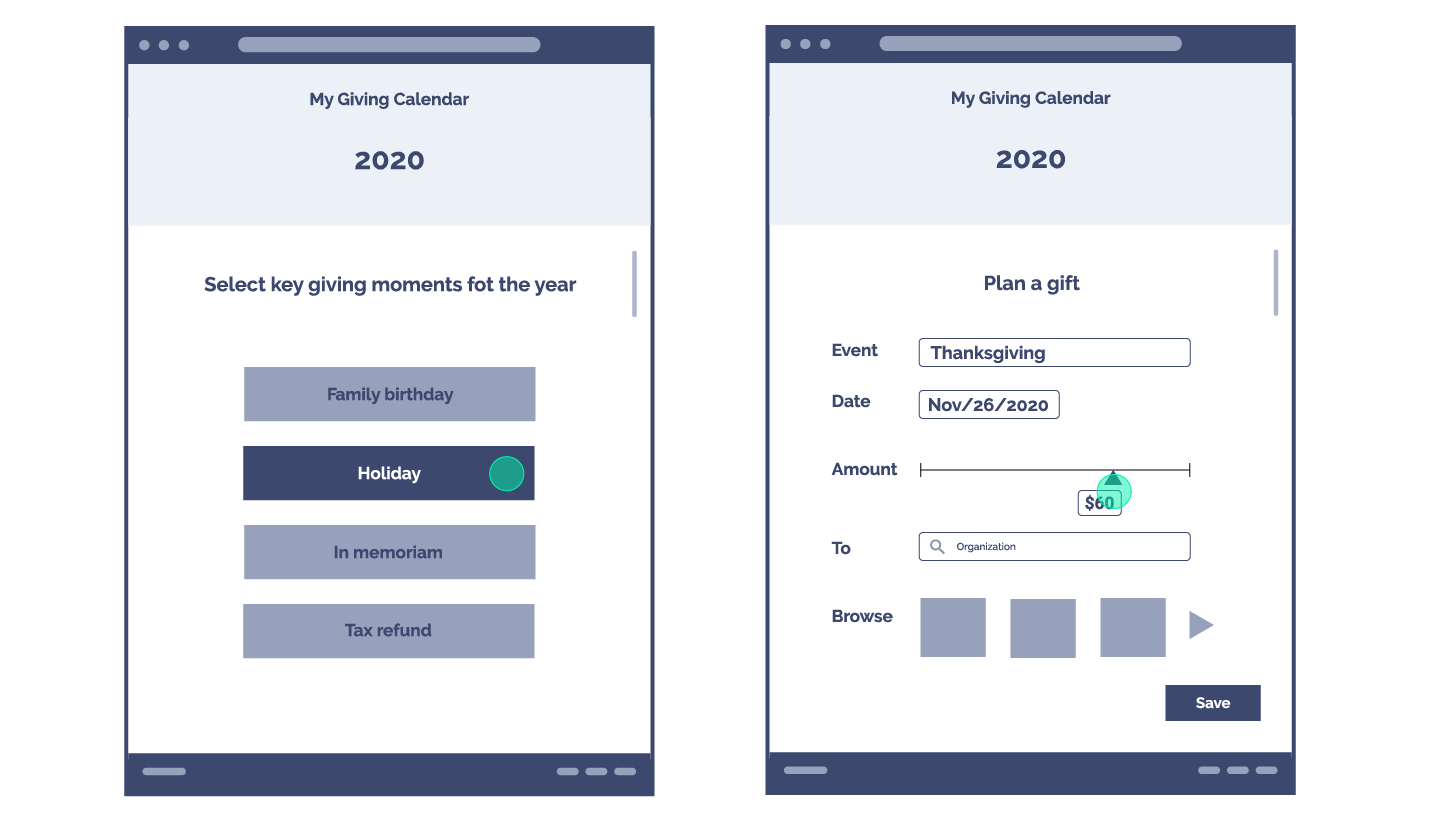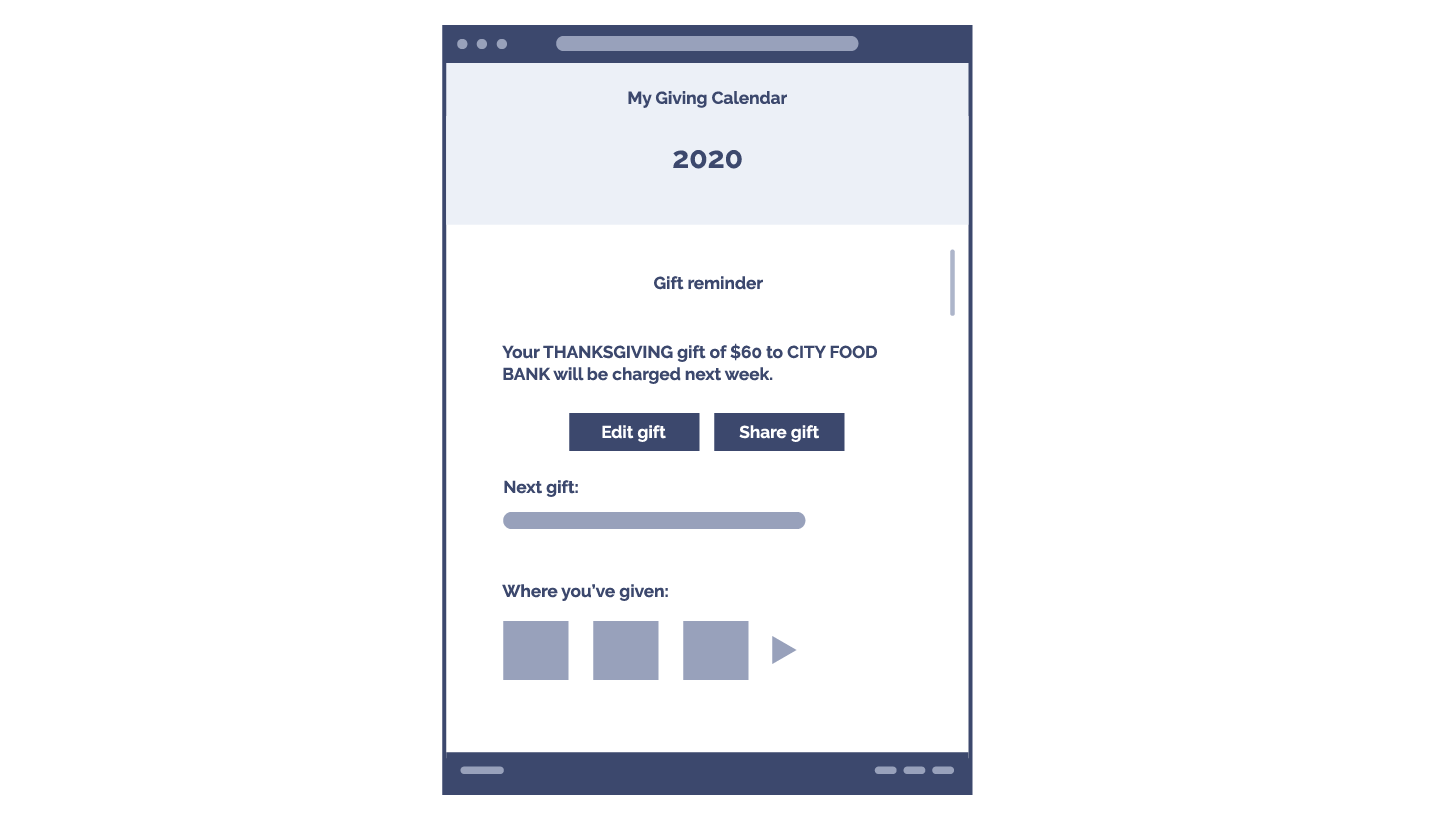The Giving Calendar


Better Giving Studio developed this concept during a product sprint led by Intentional Futures, which focused on leveraging giving research and translating it into high level product concepts.
The Opportunity
People don’t always donate in line with their intentions. Research shows that people intend to give more than they actually do. For example, in an online survey of 500 people, respondents thought most people should donate 6% of their annual income to charity, which is double the average household giving rate. Giving in the US is also extremely seasonal, with around 30% of giving taking place in December, and 10-12% of all giving in the US happening in the last 3 days of the year.
Part of the reason for this seasonality in giving is that the holiday season and the end of the tax year both provide moments of increased salience for donors.
The Giving Calendar would remind donors of other salient moments throughout the year when they intend to be generous but typically fail to follow through on that intention.
The Concept
Forming if-then plans is a highly effective means of following-through on self-directed tasks and reducing an intention-action gap. If-then planning begins with identifying relevant opportunities which initiate the pursuit of a goal: If [opportunity] arises, then I will [respond in this way]. A Giving Calendar would recognize key opportunities throughout that could initiate a giving response. “When Mom’s birthday comes, I’ll give to breast cancer awareness.” “Every year on Thanksgiving, I’ll donate to my local food bank.” Committing those intentions on a “Giving Calendar” for the year might help donors seize these opportunities for generosity.
Setting future intentions also seems to be a particularly effective approach to generosity. Research shows that people are more likely to commit to being generous in the future. Additional research indicates that the “warm glow” that comes with generous acts may be recyclable-—so a donor feels good both when scheduling the donation and again when transacting. More research in this area is needed, but it’s a promising area to build on.
For a Giving Calendar to work, it needs to be surfaced to a user at a time of high intention. There are occasions throughout the year that may naturally heighten potential donors’ feelings of intentionality and generosity: the giving season, the start of a new year, or tax time. While commitment to future gifts is ideal, it’s also important to build some flexibility into the commitments. This concept would collect payment information at the time the commitment is made, but make it clear to the donor that the payment will not be processed until the chosen donation date. This leverages people’s willingness to be more generous with future giving transactions and also tries to avoid “crowding out” current giving.
Ultimately, the objective of a planning solution is to help potential donors remember to act and seize opportunities when they arise to increase the likelihood that they will give.
This concept may be adopted, remixed, or used as inspiration for your own innovation efforts, by following these attribution guidelines.
Explore Further
This concept can be adopted, remixed, or used as inspiration for your own innovation efforts. Follow the Creative Commons guidelines below.
